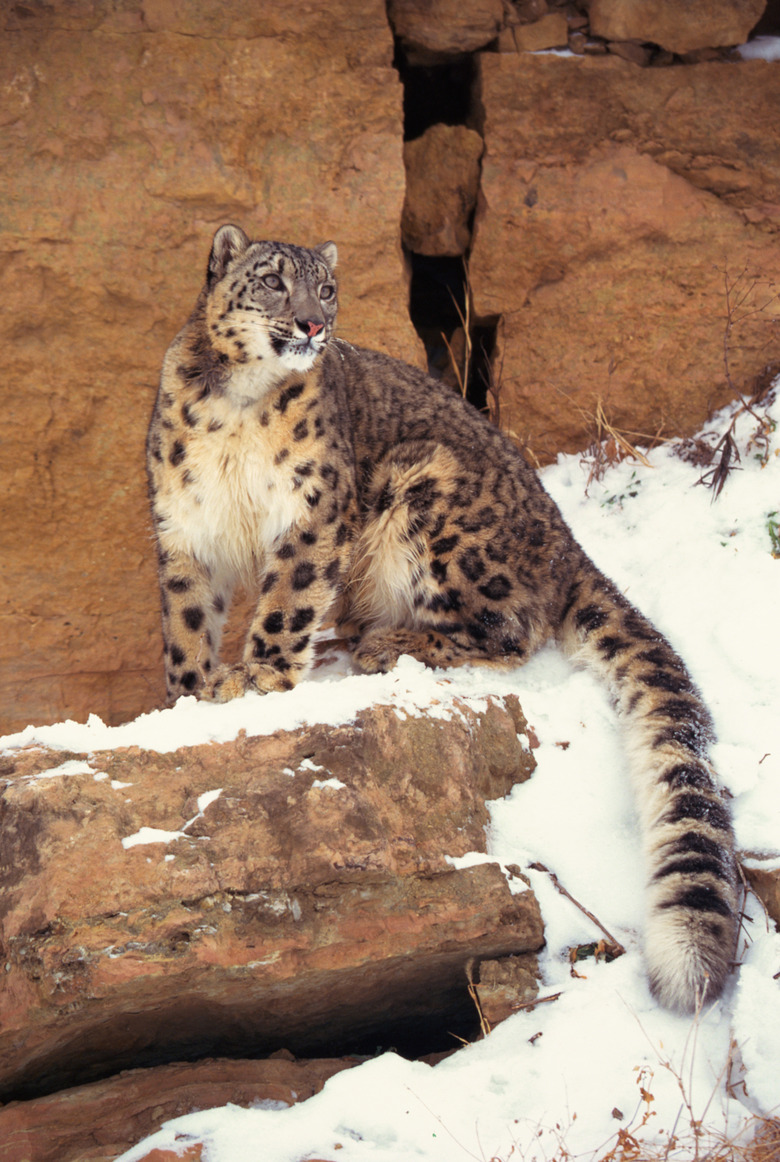What Is The Ability Of An Organism To Withstand Changes In Abiotic & Biotic Factors In An Ecosystem?
Organisms all around the world may not know, but they can often sense, their tolerance – the limits on their ability to withstand changes in an environment or ecosystem. An organism's ability to tolerate changes in the environment can affect both its ability to survive and reproduce in an existing ecosystem and its ability to move to new ecosystems.
Abiotic Factors
Abiotic Factors
All organisms have adaptations that enable them to survive under certain conditions in their environments or ecosystems. Some of the _abiotic_, or nonliving, factors that affect organisms' ability to survive include temperature, light availability, soil type, water, salinity levels, pH levels, nutrient levels, topographical features and altitude.
In the ocean, hydrostatic pressure becomes a factor in limiting what kinds of creatures can survive at great depths. In mountainous areas, oxygen availability in the atmosphere can be reduced, which is reflected in the physiology of organisms that live there.
One example of an abiotic factor impacting organisms is the rising ocean temperatures and the bleaching of coral reefs. Coral species that cannot adapt to the increasing temperatures caused by global climate change will not survive, while those that can adapt and tolerate these temperature changes will take their place in the ecosystem.
Biotic Factors
Biotic Factors
Biotic factors in an ecosystem are all of the living components of the ecosystem – all of the animals, plants, fungi, protists and bacteria that live in a certain area. Humans can be biotic factors within an ecosystem, as can trees, mosquitoes, snails and paramecia. The interactions between living organisms within an ecosystem can determine the stability of the ecosystem, and can change when influenced by other factors.
A lack of trees can affect populations of birds or other arboreal organisms, which may rely on tree cover for nesting and hiding from predators. Some biotic factors affect abiotic factors as well, such as plants that grow taller than competing plants and block sunlight, or a lack of decomposing organic matter or nitrogen-fixing bacteria that leads to low nitrogen levels in the soil.
An example of a biotic factor impacting many different oceanic species is overfishing by humans. As human overfishing depletes the prey species of many aquatic predators, only those that can adapt and find different prey will survive – unless governments create better regulations on overfishing.
Tolerance Range
Tolerance Range
The range of variation under which a species can function and reproduce is called its tolerance range. Some organisms possess a wide range of tolerance for some environmental conditions, but most survive best within a narrower range called their optimum range. As conditions in an environment move further from the optimum range for a species, populations of that species tend to dwindle.
Species that tolerate a narrow range of conditions for a specific environmental factor may be given a name with the prefix "steno-," such as stenohalines, which can tolerate only a narrow range of salinity. Those organisms that tolerate a wide range of conditions have the prefix "eury-," such as eurytopics, which can thrive in a wide range of environments.
Fish in estuaries, where salt levels in the water can vary, are euryhalines. Introduced species that outcompete native species might possess the advantage of a wider range of tolerance than the native species.
When human activities – including habitat destruction, the burning of fossil fuels and pollution – alter an environment, it may test some species' tolerance limits beyond their ability to survive; death or even extinction of species may result.
Extremophiles
Extremophiles
Some organisms, called extremophiles, have adapted to survive in extreme environments that the vast majority of other organisms on Earth could not tolerate.
Examples of extremophiles include: acidophiles that live at very low pH levels; endoliths that live inside rocks or in the pores between mineral grains; halophiles which survive in extremely high salinity; anaerobes who thrive in the presence of no oxygen; psychrophiles that prefer temperatures of 15 degrees Celsius or below; barophiles that enjoy extremely high hydrostatic pressure; xerophiles that can survive in places with almost no water.
Oddly enough, extremophiles may have a narrow range of tolerance. For example, obligate anaerobes cannot grow in an environment when oxygen is present, and some will even die.
Cite This Article
MLA
Carter, Kari Norborg. "What Is The Ability Of An Organism To Withstand Changes In Abiotic & Biotic Factors In An Ecosystem?" sciencing.com, https://www.sciencing.com/ability-organism-withstand-changes-abiotic-biotic-factors-ecosystem-12648/. 30 September 2021.
APA
Carter, Kari Norborg. (2021, September 30). What Is The Ability Of An Organism To Withstand Changes In Abiotic & Biotic Factors In An Ecosystem?. sciencing.com. Retrieved from https://www.sciencing.com/ability-organism-withstand-changes-abiotic-biotic-factors-ecosystem-12648/
Chicago
Carter, Kari Norborg. What Is The Ability Of An Organism To Withstand Changes In Abiotic & Biotic Factors In An Ecosystem? last modified August 30, 2022. https://www.sciencing.com/ability-organism-withstand-changes-abiotic-biotic-factors-ecosystem-12648/
